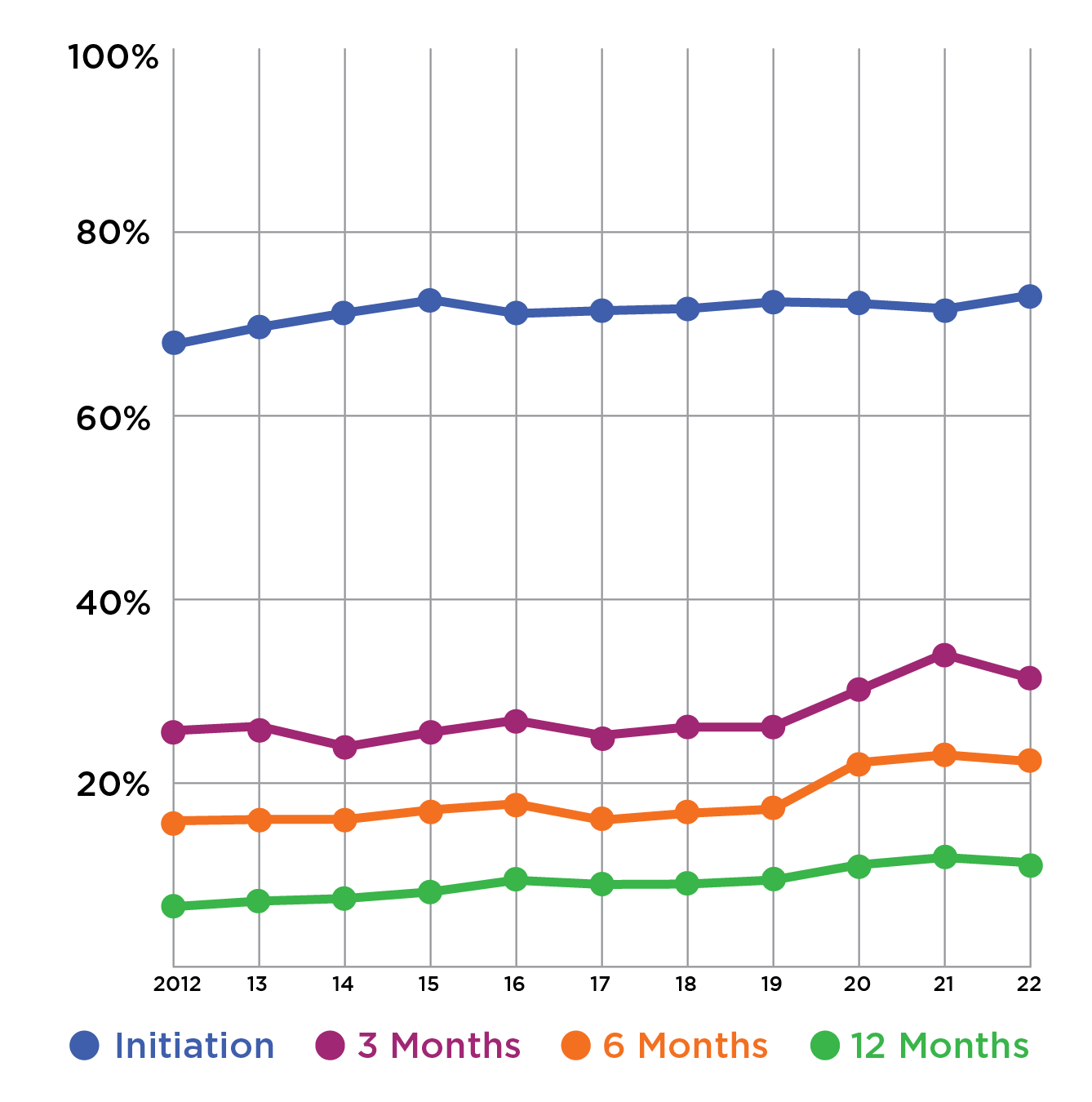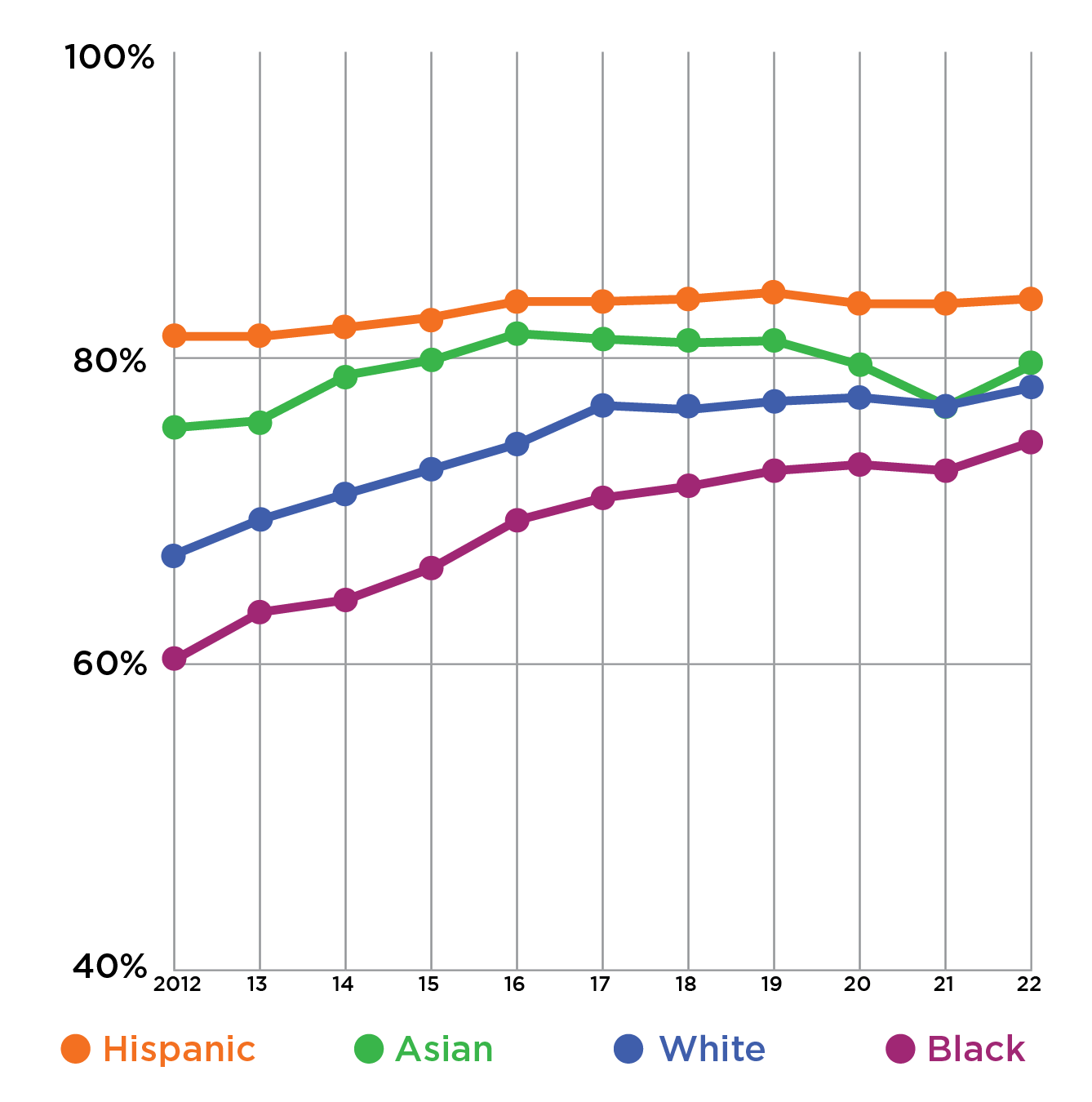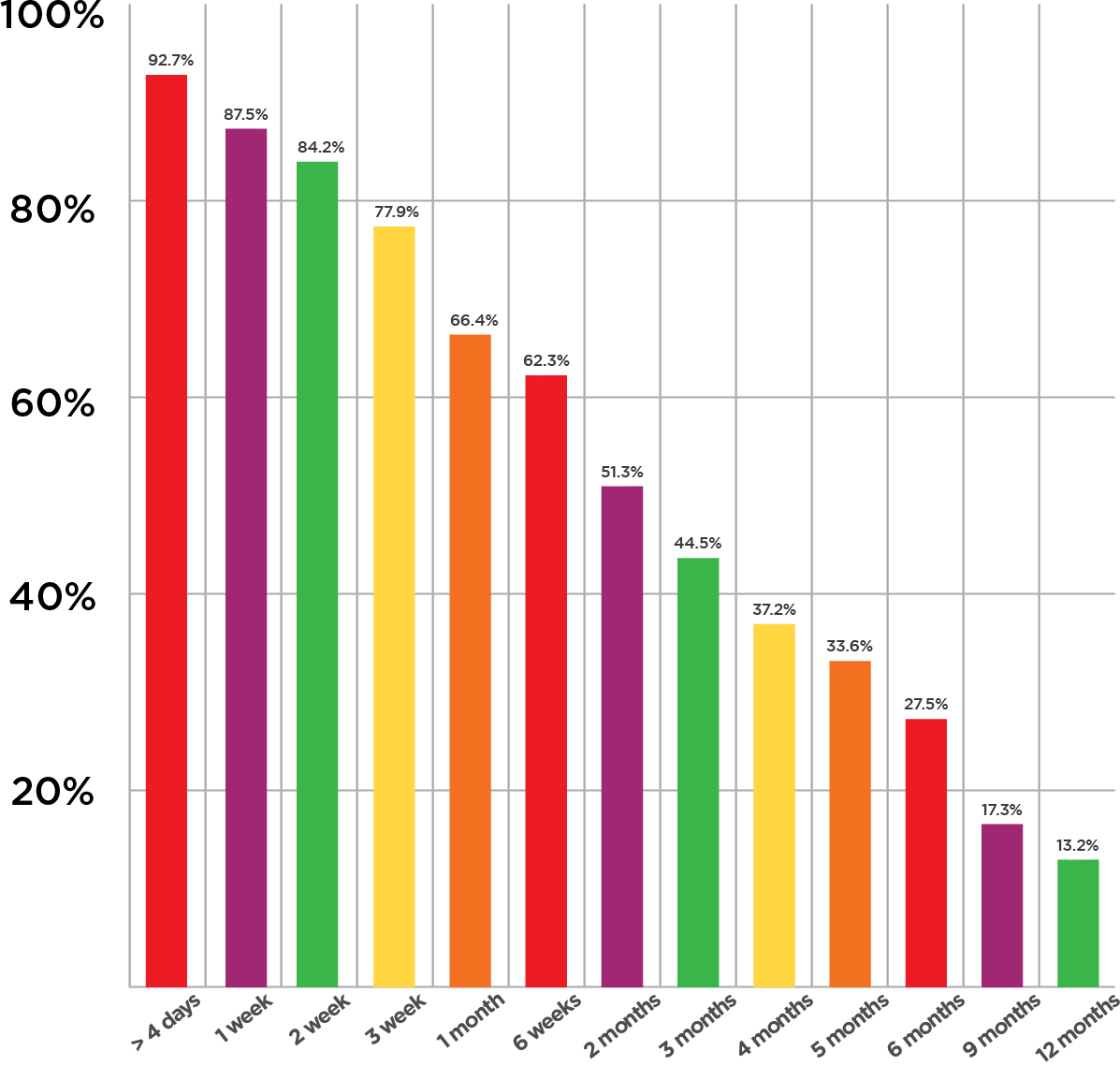Improve annual breastfeeding outcomes of Indiana WIC participants through promotion and support of breastfeeding mothers.
Introduction
The Indiana WIC program provides supplemental foods, health care referrals, breastfeeding support, and nutrition education for low-income pregnant, breastfeeding, and non-breastfeeding postpartum women, and to infants and children up to age five who are found to be at nutritional risk. WIC promotes breastfeeding as the optimal method of infant nutrition.
Breastfeeding support and promotion continue to be one of the main goals for the Indiana WIC Program. Parents who breastfeed are eligible for a larger food package and longer participation in the program. The Indiana WIC program provides several breastfeeding supports for clients including breastfeeding education, breastfeeding supplies and aids, and access to Peer Counselors and Designated Breastfeeding Experts.
As part of the requirements for administering the WIC program, Indiana WIC reports client breastfeeding data to USDA’s Food & Nutrition Service (FNS), which is included in the Breastfeeding Data by Local Agency (BFDLA) report each year. The BFDLA report compares all local WIC agencies across the country on their client breastfeeding status by certification category, specifically looking at the infants who participated in the program in a given fiscal year.
– Breastfeeding Partial (IBP)
– Fully Formula (IFF)
The goal of WIC Breastfeeding Promotion & Support is to improve the percentage of clients who fall within the Fully and Partial Breastfeeding categories, with an emphasis on improving exclusivity.
This report presents Indiana WIC client breastfeeding data statewide by individual county and agency.

Trends in Breastfeeding 
Figure 1. Indiana WIC Program Trends in Breastfeeding, 2012-2022

Figure 2. Trends in Breastfeeding Initiation by Race/Ethnicity, 2012-2022

Prevalence of Breastfeeding




Initiation and Duration
| Maternal Age | Ever Breastfed | BF 3 Mo. | BF 6 Mo. | BF 12 Mo. |
|---|---|---|---|---|
| <15 yrs | 62.8% | 8.1% | 4.8% | 2.3% |
| 15-19 yrs | 74.6% | 22.1% | 12.6% | 5.3% |
| 20-29 yrs | 72.4% | 33.7% | 22.3% | 11.1% |
| 30-39 yrs | 77.5% | 32.0% | 30.0% | 16.6% |
| 39+ yrs | 78.0% | 45.0% | 32.1% | 20.7% |
| Maternal Marital Status |
Ever Breastfed | BF 3 Mo. | BF 6 Mo. | BF 12 Mo. |
| Single | 74.2% | 30.5% | 19.1% | 9.1% |
| Married | 81.6% | 37.9% | 32.5% | 20.6% |
| Maternal Education |
Ever Breastfed | BF 3 Mo. | BF 6 Mo. | BF 12 Mo. |
| 8th grade and less | 76.6% | 30.3% | 28.1% | 16.4% |
| 9th to 11th grade | 69.1% | 25.1% | 15.5% | 6.7% |
| High school | 75.4% | 31.6% | 20.0% | 9.9% |
| Some college | 82.5% | 42.3% | 29.7% | 15.7% |
| College graduate | 83.0% | 43.2% | 36.3% | 26.2% |
| Smoking During Pregnancy |
Ever Breastfed | BF 3 Mo. | BF 6 Mo. | BF 12 Mo. |
| No | 78.4% | 36.0% | 22.6% | 12.2% |
| Yes | 65.3% | 22.2% | 10.0% | 4.0% |
| Household Smoking During Pregnancy |
Ever Breastfed | BF 3 Mo. | BF 6 Mo. | BF 12 Mo. |
| No | 75.4% | 36.1% | 20.9% | 12.1% |
| Yes | 68.2% | 18.0% | 9.9% | 4.3% |
| Anemia During Pregnancy |
Ever Breastfed | BF 3 Mo. | BF 6 Mo. | BF 12 Mo. |
| No | 76.5% | 32.2% | 24.2% | 11.4% |
| Yes | 82.0% | 27.5% | 12.1% | 2.5% |
| Trimester at Enrollment |
Ever Breastfed | BF 3 Mo. | BF 6 Mo. | BF 12 Mo. |
| 1st Trimester | 75.3% | 36.6% | 25.1% | 12.8% |
| 2nd Trimester | 76.8% | 32.5% | 24.1% | 11.4% |
| 3rd Trimester | 72.4% | 31.1% | 20.0% | 7.6% |
| Maternal Age | Fully Breastfed 3 Mo. | Fully Breastfed 6 Mo. |
|---|---|---|
| <15 yrs | 0.0% | 0.0% |
| 15-19 yrs | 43.3% | 39.2% |
| 20-29 yrs | 54.3% | 54.3% |
| 30-39 yrs | 61.0% | 54.2% |
| 39+ yrs | 75.3% | 66.3% |
| Maternal Marital Status |
Fully Breastfed 3 Mo. | Fully Breastfed 6 Mo. |
| Single | 60.8% | 50.7% |
| Married | 73.3% | 57.8% |
| Maternal Education |
Fully Breastfed 3 Mo. | Fully Breastfed 6 Mo. |
| 8th grade and less | 52.0% | 49.0% |
| 9th to 11th grade | 55.3% | 43.4% |
| High school | 61.5% | 52.5% |
| Some college | 66.9% | 61.7% |
| College graduate | 77.7% | 72.2% |
| Smoking During Pregnancy |
Fully Breastfed 3 Mo. | Fully Breastfed 6 Mo. |
| No | 64.2% | 51.0% |
| Yes | 53.1% | 36.1% |
| Household Smoking During Pregnancy |
Fully Breastfed 3 Mo. | Fully Breastfed 6 Mo. |
| No | 64.1% | 50.4% |
| Yes | 50.1% | 36.0% |
| Anemia During Pregnancy |
Fully Breastfed 3 Mo. | Fully Breastfed 6 Mo. |
| No | 63.1% | 50.0% |
| Yes | 43.7% | 40.2% |
| Trimester at Enrollment |
Fully Breastfed 3 Mo. | Fully Breastfed 6 Mo. |
| 1st Trimester | 64.0% | 51.1% |
| 2nd Trimester | 63.1% | 49.7% |
| 3rd Trimester | 62.0% | 46.2% |